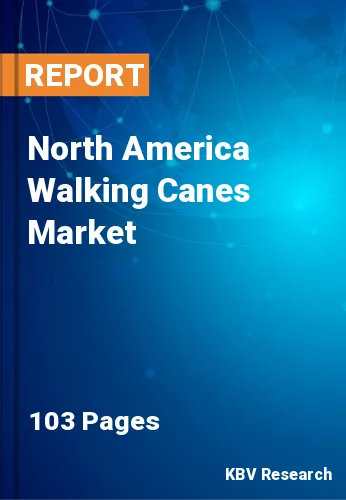The North America Walking Canes Market would witness market growth of 4.4% CAGR during the forecast period (2024-2031). In the year 2020, the North America market's volume surged to 12,157.5 thousand units, showcasing a growth of 11.4% (2020-2023).
In the market, wooden walking canes cater to a diverse range of individuals, from seniors seeking stability to collectors appreciating fine craftsmanship. The traditional charm of wooden canes resonates with those who value classic style and craftsmanship. Moreover, wood allows for intricate carving and customization, allowing users to personalize their canes to reflect their personality or preferences. Therefore, the United States market consumes 7,471.4 thousand units of wooden canes in 2023.

The US market dominated the North America Walking Canes Market by Country in 2023, and would continue to be a dominant market till 2031; thereby, achieving a market value of $532.1 million by 2031. The Canada market is experiencing a CAGR of 6.7% during (2024 - 2031). Additionally, The Mexico market would exhibit a CAGR of 5.8% during (2024 - 2031).
The market is characterized by continuous innovation and technological advancements to enhance functionality, comfort, and aesthetics. Manufacturers are focusing on ergonomic designs that prioritize user comfort and usability. Traditional canes made from heavy materials such as wood or metal can be cumbersome and may exacerbate fatigue during prolonged use. By utilizing lightweight materials such as aluminum, carbon fiber, or composite plastics, manufacturers can reduce the overall weight of walking sticks without compromising strength or durability.
Moreover, the demand for personalized canes tailored to individual preferences and needs is rising. Manufacturers offer customizable options in colors, patterns, and accessories, allowing users to express their style while addressing mobility requirements. Personalized canes are more than functional mobility aids; they express style and individuality. By allowing users to customize their walking sticks according to their preferences, manufacturers enable users to feel confident and empowered in their mobility journey.
The escalating incidence of chronic illnesses in the United States has led to a surge in the need for walking canes as individuals strive to preserve their independence and mobility in the face of health obstacles. Chronic diseases, such as arthritis, diabetes, cardiovascular diseases, and neurological conditions, can significantly impact mobility, balance, and overall quality of life. Additionally, Canada is experiencing a demographic shift characterized by a growing proportion of older adults. By providing support during activities of daily living, canes help older adults remain active and engaged in their communities while aging gracefully at home. As per Statistics Canada, in 2022, there were 7,330,605 people aged 65 and older in Canada. Moreover, over 861,000 people aged 85 and older were counted in the 2021 Census, more than twice the number observed in the 2001 Census. Hence, North America's rising chronic disease cases and aging population in North America will drive the demand for walking sticks in the region.
Free Valuable Insights: The Walking Canes Market is Predict to reach USD 2.2 Billion by 2031, at a CAGR of 4.9%
Based on End Use, the market is segmented into Aged Use, Patient Use, and Decoration Use. Based on Material, the market is segmented into Wooden, Carbon Fiber, Metal, and Others. Based on Distribution Channel, the market is segmented into Retail Stores, Online Retail, and Specialty Medical Stores. Based on countries, the market is segmented into U.S., Mexico, Canada, and Rest of North America.
By End Use (Volume, Thousand units, USD Billion, 2020-2031)
By Material (Volume, Thousand units, USD Billion, 2020-2031)
By Distribution Channel (Volume, Thousand units, USD Billion, 2020-2031)
By Country (Volume, Thousand units, USD Billion, 2020-2031)
Our team of dedicated experts can provide you with attractive expansion opportunities for your business.

